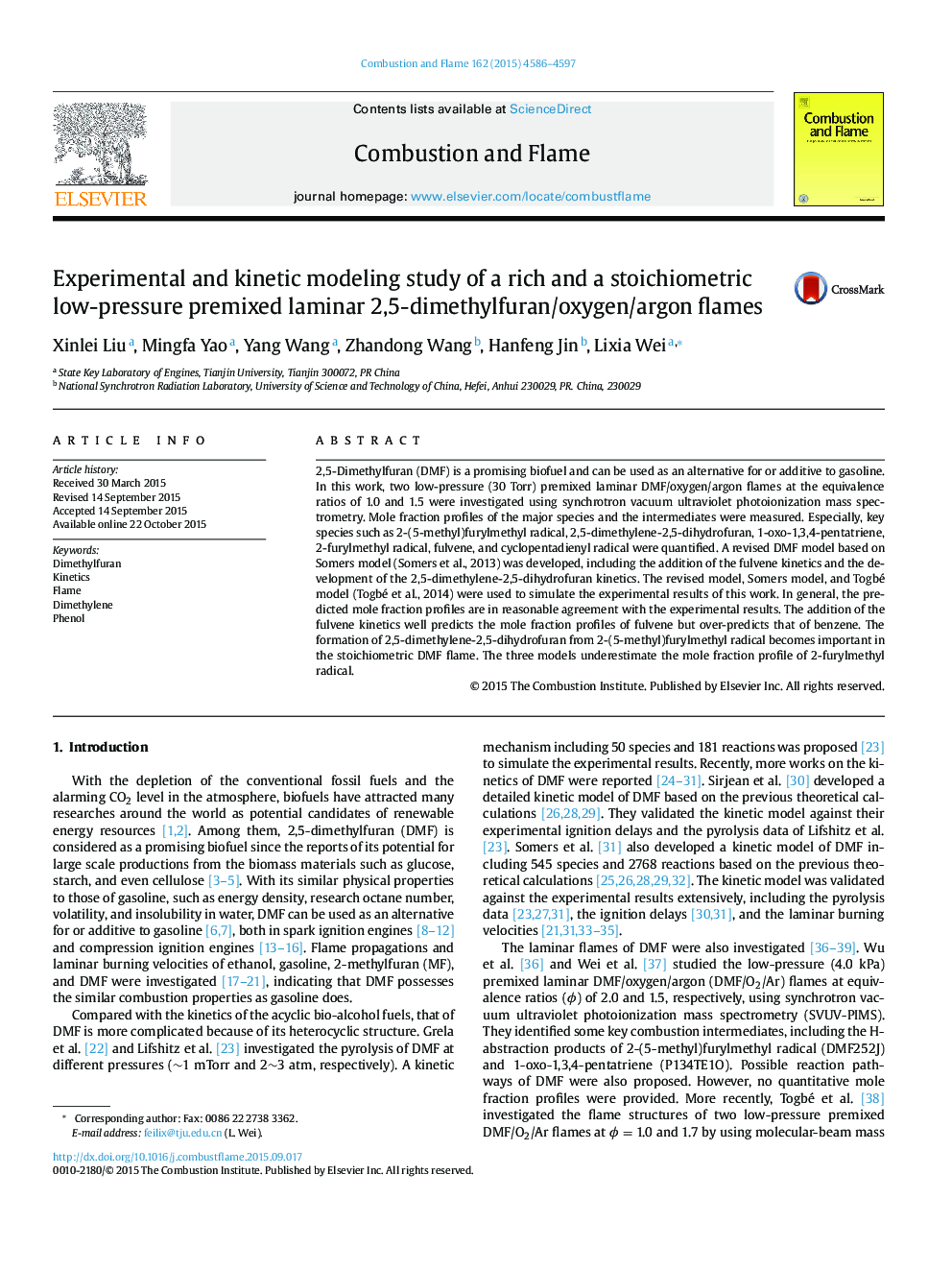| Article ID | Journal | Published Year | Pages | File Type |
|---|---|---|---|---|
| 168613 | Combustion and Flame | 2015 | 12 Pages |
2,5-Dimethylfuran (DMF) is a promising biofuel and can be used as an alternative for or additive to gasoline. In this work, two low-pressure (30 Torr) premixed laminar DMF/oxygen/argon flames at the equivalence ratios of 1.0 and 1.5 were investigated using synchrotron vacuum ultraviolet photoionization mass spectrometry. Mole fraction profiles of the major species and the intermediates were measured. Especially, key species such as 2-(5-methyl)furylmethyl radical, 2,5-dimethylene-2,5-dihydrofuran, 1-oxo-1,3,4-pentatriene, 2-furylmethyl radical, fulvene, and cyclopentadienyl radical were quantified. A revised DMF model based on Somers model (Somers et al., 2013) was developed, including the addition of the fulvene kinetics and the development of the 2,5-dimethylene-2,5-dihydrofuran kinetics. The revised model, Somers model, and Togbé model (Togbé et al., 2014) were used to simulate the experimental results of this work. In general, the predicted mole fraction profiles are in reasonable agreement with the experimental results. The addition of the fulvene kinetics well predicts the mole fraction profiles of fulvene but over-predicts that of benzene. The formation of 2,5-dimethylene-2,5-dihydrofuran from 2-(5-methyl)furylmethyl radical becomes important in the stoichiometric DMF flame. The three models underestimate the mole fraction profile of 2-furylmethyl radical.
